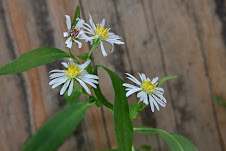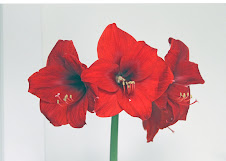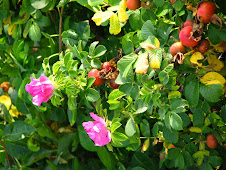We all have chickweed growing somewhere in our yard. Chickweed, also called Starwort, the Latin name is Stellaria media.
This weakly stemmed wildflower is many branched and usually grows along the ground in thick masses. Chickweed prefers to grow in lawns and disturbed areas which contain some shade and moisture. Its height is from 3 to 8 inches with trailing stems up to 16 inches long. Small white flowers are in terminal clusters or solitary. The fruit is a many seeded capsule with seeds that germinate in the fall. Flowering is from February through December. The range of this annual is throughout most of North America except Arctic.
This edible weed was introduced from Eurasia and is a favorite food of chickens and wild birds. Chickweed is also eaten worldwide as a salad or cooked.
They are as numerous in species as they are in region. Most are succulent and have white flowers, and all with practically the same edible and medicinal values. They all exhibit a very interesting trait (they sleep) termed the 'Sleep of Plants,' every night the leaves fold over the tender buds and the new shoots.
Chickweeds are Medicinal and edible, they are very nutritious, high in vitamins and minerals, can be added to salads or cooked as a pot herb, tasting somewhat like spinach. I’ve added chickweed to salads and omelets – delicious. The major plant constituents in Chickweed are Ascorbic-acid (vitamin C), Beta-carotene (vitamin A), Calcium, Gamma-linolenic-acid, Flavonoids, Hentriacontanol, Magnesium, Niacin, Oleic-acid, Potassium, Riboflavin, Rutin, Selenium, Triterpenoid saponins, Thiamin, and Zinc. The whole plant is used in alternative medicine.
New research indicates its use as an effective antihistamine. A extract is also used externally to treat rheumatic pains, wounds and ulcers. It can be applied as a medicinal poultice and will relieve any kind of eczema and is effective wherever there are fragile superficial veins or itching skin conditions.
To make sure you are using the correct plant the stem should not have a sticky milky sap. If you look carefully at the stem; there is a small line of thin hairs that run up one side. When the line of thin hairs run into a pair of leaves the line of hairs switch to the other side of the stem. Another defining characteristic is to slightly bend the stem and slowly pull apart. There will be a small thread running through the stems that is somewhat elastic.
Lawn lovers, according to Green Deane who writes a blog on edible weeds, “… have given chickweed a bad rap. Instead of lawn lovers pulling out a clump of chickweed and having it for dinner, they spend a lot of green to get rid of the green. Its demise is a million-dollar business, which is a large expense and a waste of food. Raw, it tastes exactly like corn silk, if you’ve ever tried that. Cooked it is similar to spinach though the texture is different. It can be added to soups or stews, but not until the last five minutes to prevent overcooking. Unlike many wild edibles, the chickweed’s stems, leaves, flowers and seeds are all edible. It does hold nitrates and people with allergies to daisies might want to pass it by.”
Chickweed Pie is best hot; it will keep one to two days in the refrigerator and can be reheated in a microwave oven.
One 10-inch pie crust
3 cups chopped chickweed
1 cup diced slab bacon
½ cup finely chopped onion
3 large eggs
1½ cups sour cream
1 tablespoon all-purpose flour
½ teaspoon grated nutmeg
Preheat oven to 325 degrees. Line a 10-inch pie dish with crust and make a raised border around the rim to prevent filling from overflowing during baking.
To prepare chickweed, remove all leaves, twigs and root ends, reserving only the greenest, leafiest parts. Rinse thoroughly in a colander and gently dry with paper towels. Bunch the chickweed together into a ball and chop it with a sharp knife until reduced to a confetti texture. Measure, then put chickweed in a large bowl.
Fry diced bacon in a skillet until it begins to brown, then add onion. Cook about 3 minutes, or until onion wilts. Using a slotted spoon, transfer bacon and onions to bowl with chickweed. Discard drippings from pan.
In a separate bowl, beat eggs until lemon colored, then add sour cream, flour and nutmeg. Add egg mixture to chickweed, onions and bacon. Spread filling evenly in the pie shell and pat down firmly with a spoon. Bake 45 to 50 minutes, or until pie has set in center and top looks golden.
—Adapted from Pennsylvania Dutch Country Cooking by William Woys Weaver (Abbeville Press, 1993).
Subscribe to:
Post Comments (Atom)



















LP_gardening_2666.jpg)
LP_gardening_2668.jpg)

LP_garden_2819.jpg)

LP_flower_0563.jpg)
LP_flower_0577.jpg)
LP_flower_0545.jpg)
LP_flower_0555.jpg)
LP_flower_0539.jpg)
LP_dog_0470.jpg)
LP_snow_0467.jpg)
LP_dog_0349.jpg)
LP_tree_8153.jpg)
LP_5028.jpg)
LP_flowers_3940.jpg)

LP-grass_0889.jpg)
LP_redfox_1651.jpg)
LP_squirrel_6978.jpg)
LP_flower_6936.jpg)
LP_squirrel_6864.jpg)
LP-deer_4773.jpg)
LP_4521.jpg)
LP_1251.jpg)
LP_4585.jpg)
LP_3784.jpg)
LP_3759.jpg)
LP_3811.jpg)
LP_3816.jpg)
LP_3847.jpg)
LP_0870.jpg)
LP_4183.jpg)
LP_0891.jpg)
LP_3175.jpg)
LP_3577.jpg)

LP_3068.jpg)
LP_3058.jpg)
LP_3562.jpg)
LP_0118.jpg)
LP_3407.jpg)
LP_3150.jpg)
LP_3011+(2).jpg)
LP_3020.jpg)
LP_2830.jpg)
LP_2782.jpg)
LP_2828.jpg)
LP_1746.jpg)
LP_2648.jpg)
LP_2666.jpg)
LP_2668.jpg)
LP_2493.jpg)
LP_2611crop.jpg)


LP_2588.jpg)






LP_2126.jpg)
LP_2122.jpg)






No comments:
Post a Comment